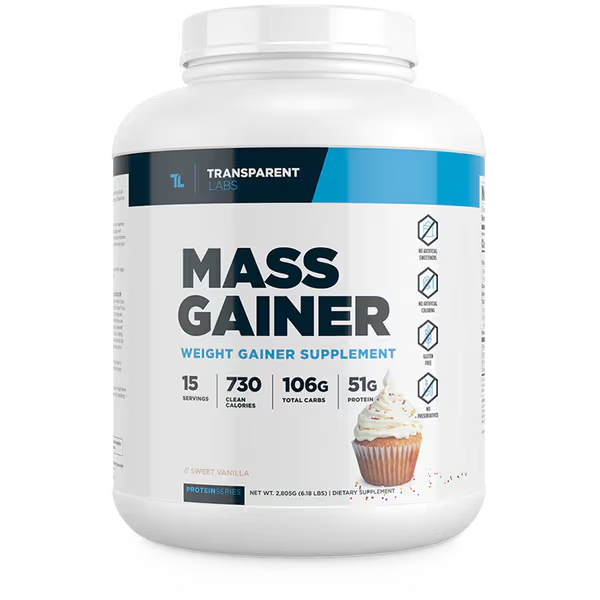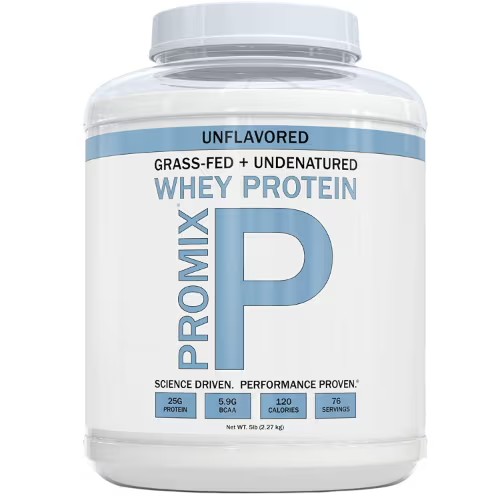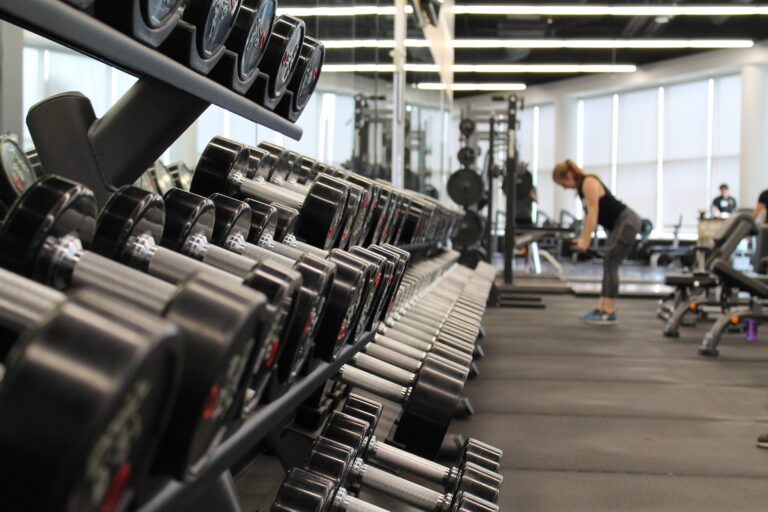Mass Gainer vs Whey Protein – Is One Better Than the Other?
Mass gainer vs whey protein is not a debate fitness professionals tend to have. And that’s because these two supplements serve different purposes. With that said, for most beginners or people who have been going to the gym for only a few months, the two supplements can look the same, and they might often confuse them with one another.
And it’s easy to understand why – after all, in most gyms, you can get both after your training session, and they usually look the same – a shake with water or milk that has a sweet taste.
In this article we will discuss the difference between whey protein and mass gainer, how to choose whether to get whey protein or mass gainer and what the pros and cons of each of these supplements are.
Let’s get started.
Mass Gainer vs Whey Protein? Whey protein is a versatile supplement that helps increase the amount of protein in any diet. Gainer is best suited for people who due to poor appetite or other reasons, cannot get enough calories and especially carbohydrates from whole foods.
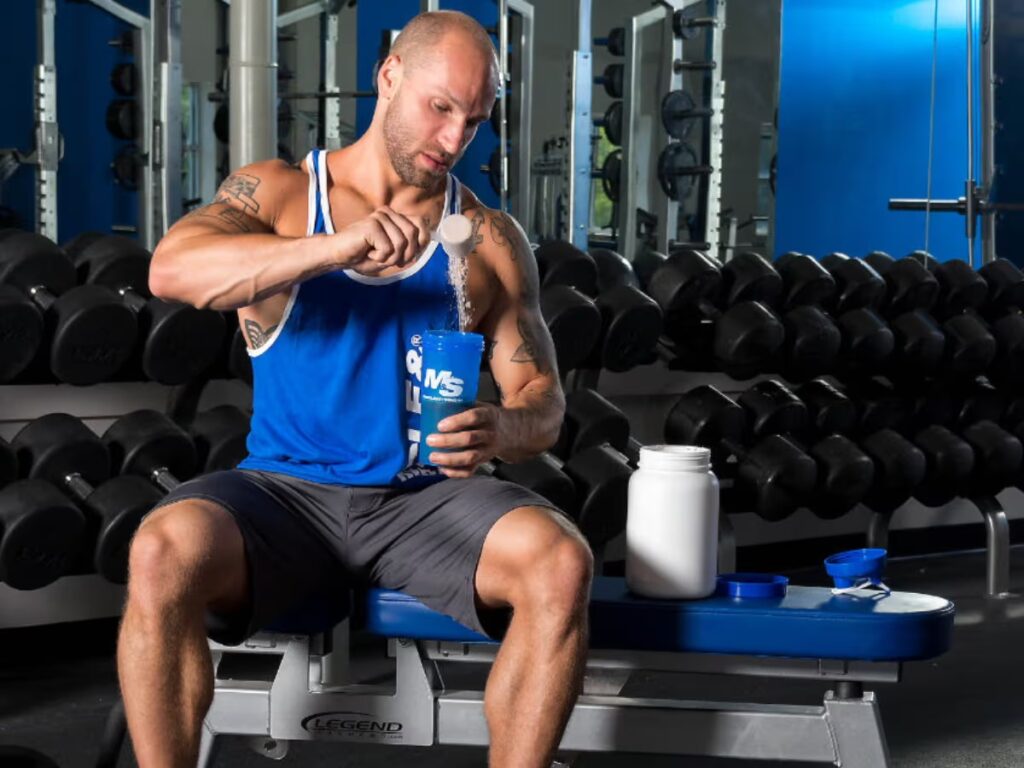
What’s Whey Protein?
Whey protein is a protein supplement derived from milk during cheese production. Milk contains two kinds of protein: whey (20%) and casein (80%), so the liquid left behind during cheese-making is referred to as whey. It’s considered to be one of the richest sources of protein while also being easily and quickly absorbed by the body.
Whey has numerous benefits. It has an excellent amino acid profile, as it contains all nine essential amino acids, which helps with muscle building and with recovery after rigorous exercise. It’s no wonder that this is the most popular and widely used protein supplement on the market. It’s affordable, easy to find, offered by many different brands, and has numerous flavors.
What’s a Mass Gainer?
Often beginners in the gym tend to ask what’s better – mass gainer vs protein powder. But in reality, mass gainer is a slightly different type of supplement with a different purpose. While whey protein is often used as a source of almost only protein, a mass gainer is more so a meal replacement kind of shake, at least in terms of the composition and ratio of macronutrients. Its main idea is to help increase the number of carbohydrates and the calorie content of an overall diet. It contains not only protein, but also a very high amount of carbohydrates and a higher amount of fat per serving than whey protein.
Usually, it’s considered to be a high-calorie, high carbohydrate powder that can help athletes quickly increase their daily calorie intake without having to eat an excessive amount of food. Mass gainers are typically consumed by people who have a hard time gaining weight and they can be a good addition to a healthy diet.
Mass Gainer vs Whey Protein
Now that you know what both of these supplements are, let’s continue with our comparison of whey protein vs mass gainer. In the next few paragraphs, we will compare these two kinds of shakes in order to help you better understand the key differences and so make a better choice when it comes down to deciding which one to get.
1. Average % Of Protein/Carbs/Fats
Whey protein powders typically consist of approximately 80 to 90% of protein with zero to few grams of fat and / or carbs. On the other hand, in mass gainers, the carbohydrate content is usually higher than the protein content. There are various types of mass gainers on the market, and they have different protein to carbs ratios.
Some products contain protein and carbohydrates in a ratio of 1:2 or 1:3, others – 1:5. You can also find products with an almost 1:1 ratio. In my practice, I most often recommend using gainers in which the ratio of protein to carbohydrates is 1:2 or 1:3.
That is, the product contains 2 to 3 times more carbohydrates than protein per serving. Although gainers with a ratio of 1:4 or 1:5 may be suitable for athletes with very high calorie (3500-4000 kcal and more) and carbohydrates (400g and more) needs.
That being said, whey protein for mass gain is something that can be used if you combine it with a source of carbs and fats. For example, if you mix your standard whey protein powder with a banana and milk in a quick shake, then that would become a mass gainer in a sense.
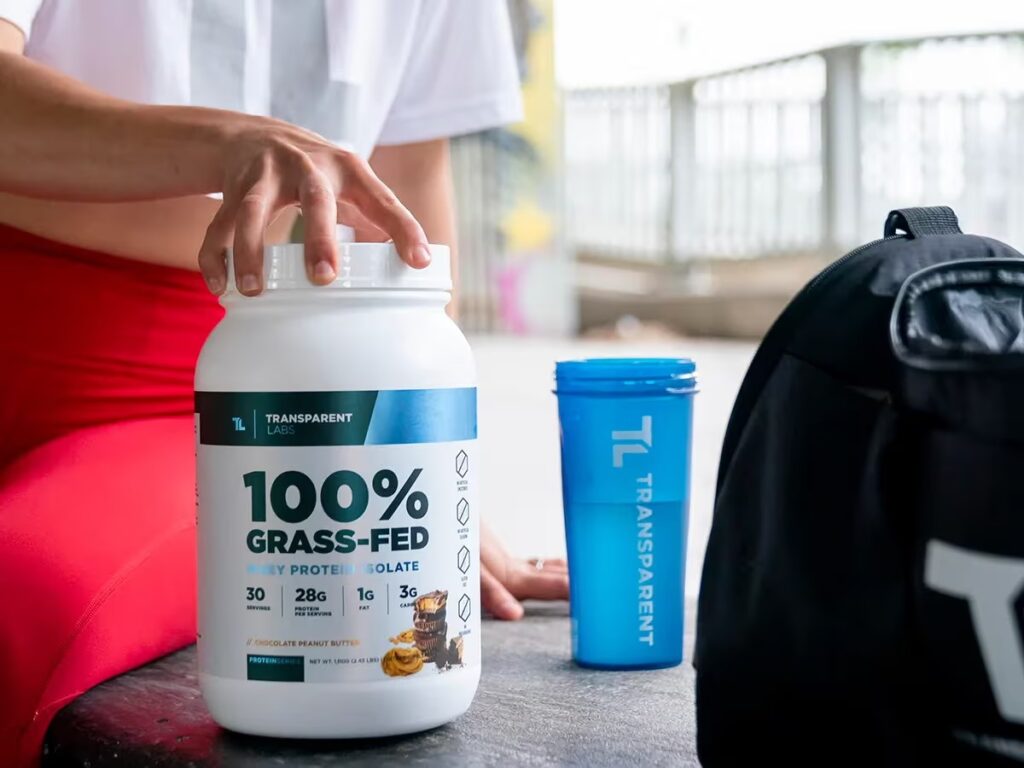
2. Processing
Although you can easily find unflavored protein powder, most brands on the market tend to offer flavored products using different natural or artificial sweeteners. And while that does make the shakes taste a lot better, it also can slightly increase the number of carbs they contain (if caloric sweeteners are used).
On the other hand, a mass gainer is a powder that contains a kind of protein (whey, casein, egg or mix of different animal-based proteins, or fully plant-based) and other added-in nutrients in the forms of fats and carbs.
Carbohydrates are most often presented in the form of maltodextrin, however, different brands can use different carbohydrate sources. Much like whey protein powders, mass gainers are typically flavored so that they can taste better for the consumer.
3. Price Range
A 5lb package of whey protein (concentrate, isolate, or mix of concentrate and isolate) costs $85-$95 on average. A tub contains approximately 73 servings of 30-32 grams, so each costs around $1.25 or more.
A 5lb or 6lb container of gainer averages $50-$60. However, the volume of a portion in a gainer is much larger than a serving of protein. Depending on the specific brand, a portion of gainer can weigh from 145 g to 335 grams. It’s not just big, but a huge serving.
Therefore, the number of servings in a gainer is much smaller than in a 5lb tub of protein supplement – only 5, 8, 15, 20 servings per entire container. Depending on the brand and specific product, the cost of one portion can be $3-3.5, $4.5-5, $6.25 and even more.
However, from a practical point of view, it is not necessary for us to follow the recommendations that are indicated on the package of the gainer. I very often recommend to divide the indicated serving into 2 or even 3. For example, if the indicated serving is 333-336 grams, it can be divided into 2 or 3.
After all, few people need to consume 245-252 grams of carbohydrates at one time (that’s how many carbohydrates can be contained in a portion weighing 333-336 grams). For the absolute majority it is unnecessary and can even be harmful.
There is one more important nuance. Given that one standard serving of gainer (which is specified by manufacturers) contains 50 grams of protein, dividing the serving by 2 will give us the same amount of protein as one serving of whey protein (24-25 grams). So even from this point of view, it is reasonable to divide the portion of the gainer indicated by the manufacturer by 2.
Therefore, if you use a reasonable serving of the gainer at one time, the cost of one serving will be much lower, than $3-6. In fact, the cost of one serving of gainer in this case will be very close to the cost of one serving of protein. However, along with protein, you will also get a significant amount of carbohydrates. This can be a win-win situation for those who are struggling to get the needed amount of protein and carbs.
4. Function
It’s vital to know your goal before making the decision of whether to get a whey protein powder or a mass gainer. On the one hand, mass gainers are a terrific option for muscle building and gaining weight. And whey protein is a far better choice if you’re looking to build lean muscle mass or you want to lose body fat.
On the other hand, mass gainers may contribute to overconsumption of carbohydrates, which place a large metabolic load on the body, greatly increase blood sugar spikes, may lead to weight gain (and of course, unwanted fat gain) and thus to health problems. For example, carbohydrates overconsumption can increase risk of heart diseases.
In order to reduce the risks, you can use a gainer with a ratio of protein to carbohydrates of 1:2 or 1:3, or use a little trick – divide the manufacturer’s recommended portion of the gainer by 2 or 3 times.
Mass Gainer vs. Whey Protein: Summary
Now that you’ve learned all the key differences between these two supplements let’s narrow this down and take a look at their pros and cons.
1. Pros/Cons of Whey Protein
Positives:
Could be better:
2. Pros/Cons of Mass Gainers
Positives:
Could be better:
Mass Gainer vs. Whey Protein: When to Use Each?
You can probably get from the name that mass gainers are a terrific supplement for gaining weight, building muscles, and increasing your daily calorie and carbs intake. On the other hand, whey protein powder is a much more versatile product. It can be used on its own as a way to increase protein intake, help with building muscle, and also preserve your muscles when you’re on a diet.
How to Pick Between Mass Gainer and Whey Protein?
We’ve come to the most pressing question of this article, and that’s how to choose between these two supplements. In order to make things easier for you, we will take a look at a few aspects of each of these products to help you narrow down which one best fits your needs.
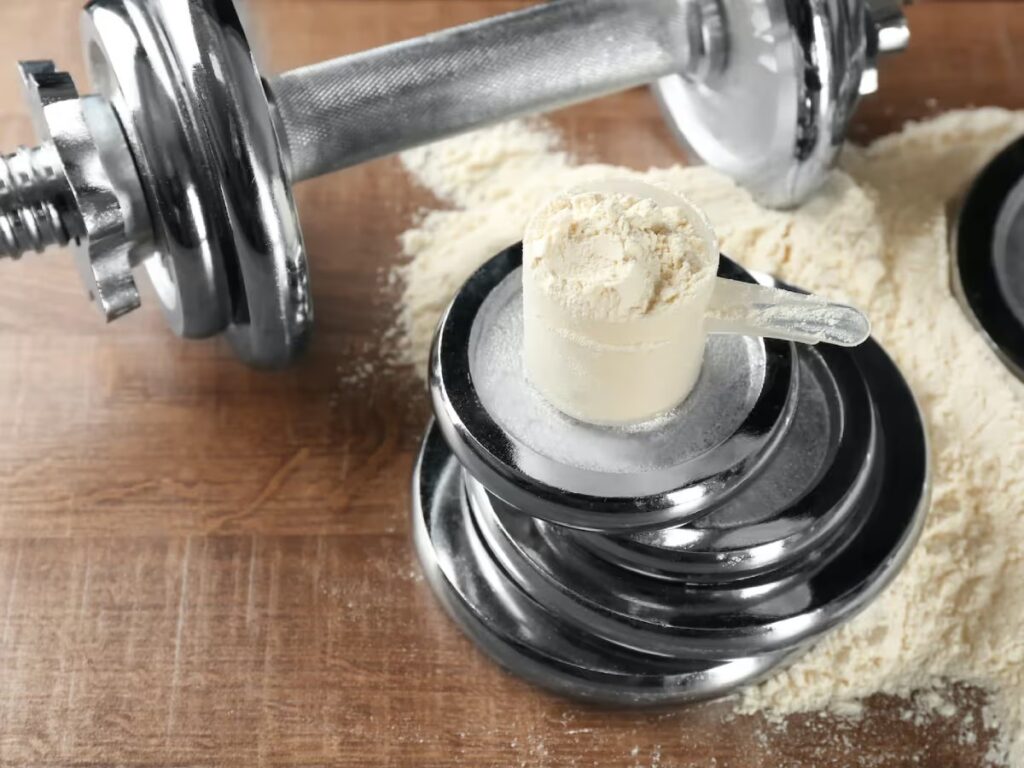
1. Diet Type
If you are trying to gain muscle mass and must follow a very high calorie diet, a weight gainer may be a good choice. Especially if the calorie needs are more than 4000 kcal and above, and the carbohydrate needs are more than 400 g. In this case, the gainer will help to easily increase the caloric content and provide you with a large portion of carbohydrates.
However, keep in mind that whole foods should always be your priority! Remember about “Food First Approach” – a varied diet is always more beneficial and safer, than supplements. That’s why gainer is better to use only if you cannot get the required amount of calories and carbohydrates from food.
If you just want to increase the amount of protein in your diet, without a significant portion of carbohydrates and fat, whey protein is the best choice. This is a versatile product that can be used both for weight loss diet and for gaining muscle mass.
If you’re vegan or you don’t consume dairy, then whey protein is not an option, as it’s essentially made from milk. On the other hand, mass gainers don’t necessarily have to contain whey protein or other animal-based protein (like casein or egg protein). In fact, there are many vegan options on the market.
2. Protein Source
Whey protein is made from milk, and so that’s its primary protein source. With mass gainers, it usually depends on the type of mass gainer you’re buying – some contain whey, casein, egg protein or a mix of different types of proteins, while others can be made with pea, soy, or rice protein.
3. Approx. Price per Serving
Typically, the average price per serving of whey protein is approximately $1.25 or above, depending on the brand of the protein and source of whey protein (concentrate, isolate or mix of both). When it comes to mass gainers, the average price per serving is usually around $4.5-$5. However, do not forget about a trick that will help to greatly reduce the cost of a portion of gainer.
4. Protein-by-Weight Ratio
Whey protein powders contain 75-90% of protein. On the other hand, mass gainers usually have a protein-to-carb ratio of between 1:1 to 1:5. The optimal ratio is 1:2 or 1:3.
5. Label Transparency
Pay attention to the type and amount of ingredients in a specific supplement. In addition to the key nutrients – protein (for whey protein) and protein + carbohydrates (for gainer), supplements may contain natural or artificial sweeteners, emulsifiers and other additives.
Typically, whey protein contains fewer ingredients than a gainer. However, this is not surprising, because the gainer contains a huge amount of carbohydrates, which must come from different sources. It can be maltodextrin alone, or a mixture of oat flour, quinoa, rice and maltodextrin. There are many possible sources and blends of carbohydrates in weight gainers
6. Value for Money
When it comes to value for money, make decisions based on your goals, macronutrient needs and comfort. This issue was discussed in detail earlier. We would like to remind you that if you consume such a portion of the gainer at one time, which is indicated on the label, this product will cost you much more than whey protein.
However, if you consume 2 times less portion of gainer (than indicated on the package), the price will not be much higher than for serving of whey protein. At the same time, you will receive not only the same portion of protein (25 g), but also an additional portion of carbohydrates. Keep that in mind.
Now that we’ve compared these two supplements, let us recommend to you our favorite mass gainer and whey protein powder that you can find on the market.
Mass Gainer We Recommend
Transparent Labs’ Mass Gainer is everything you need from that kind of supplement. This product has an excellent ratio of protein to carbohydrates, which is 1:2. It also contains creatine monohydrate, which can be considered as an additional bonus. The only thing worth considering is the relatively high amount of fat.
However, if you use half of the portion suggested by the brand, this nuance can be bypassed. This is one of the best mass gainers to add extra carbs and protein to your diet for gaining lean muscle mass!
This product has two flavors – Sweet Vanilla and Chocolate Glaze Donut and you can choose which one to get based on what kind of taste you enjoy more.
Protein We Recommend
Promix Whey Protein Powder whey protein has 25 grams of protein per serving, along with 5.9 grams of branched-chain amino acids. It’s everything you would want to get from a whey protein powder, as it contains only whey concentrate and sunflower lecithin.
A serving has only 120 calories, and a standard 5lb container has 76 servings in it. You can get it unflavored, or you can choose one of the four flavors available. But keep in mind that this protein contains lactose, so it may not be suitable for people with lactose intolerance. Look for protein isolate from Promix!
By the way, one serving of this unflavored protein is only about $1! This product is worth every penny!
FAQ
Should I Take Mass Gainer and Whey Protein?
You can take both at the same time, although it wouldn’t make much sense. Essentially, if you already have a whey protein at home, you can easily make a mass gainer shake by simply adding milk and a source of carbs such as a banana.
Is Mass Gainer the Same as Whey Protein?
No, it’s not the same. Both supplements contain a large amount of protein, but only the gainer contains a large portion of carbohydrates.
Conclusion
Both the mass gainer and whey protein powder are great dietary supplements that can help you reach specific goals. With that said, whey protein tends to be more versatile and can be helpful to people following all kinds of diets.
Mass gainers are specifically aimed at those who want to gain weight and build muscle, but have difficulties in the context of increasing the caloric content of the diet, especially its carbohydrate component. What’s your opinion – would you recommend getting a mass gainer or whey protein?
Also Read:
- Best Protein Powder For Teens
- Best Grass Fed Whey Protein
- Ensure vs Premier Protein
- Whey Protein Isolate vs Concentrate
- Best Unflavored Protein Powder
- Best Protein Shake for Diabetes
- Best Strawberry Protein Powder
- Can You Mix Creatine With Protein Powder
- Best Protein Powder for Smoothies
- Difference Between Soy and Whey Protein
References:
- What to Know About Meal Replacement Shakes // Webmd: https://www.webmd.com/diet/what-to-know-about-meal-replacement-shakes
- All about carbs // Hri: https://www.hri.org.au/health/your-health/nutrition/all-about-carbs
- WHAT DOES ‘FOOD FIRST’ MEAN? // Sport Integrity:
- https://www.sportintegrity.gov.au/news/blog/2018-12/digesting-food-first-approach
- What’s Actually in Protein Powder? // Myrecipes: https://www.myrecipes.com/extracrispy/what-is-protein-powder
- Protein Powder: The What, Why, & How To Choose // Healthcenter: https://healthcenter.uga.edu/protein-powder-the-what-why-how-to-choose/
Why Trust Us?
With over 20 years in Olympic Weightlifting, our team does its best to provide the audience with ultimate support and meet the needs and requirements of advanced athletes and professional lifters, as well as people who strive to open new opportunities and develop their physical capabilities with us.
By trusting the recommendations of our certified experts in coaching, nutrition, dietology, and sports training programming, as well as scientific consultants, and physiotherapists, we provide you with thorough, well-considered, and scientifically proven content. All the information given in the articles concerning workout programming, separate exercises, and athletic performance, in general, is based on verified data. We ensure that you can rely on our professionals’ pieces of advice and recommendations that can be treated as personalized ones which will benefit you and fully meet your needs.
The product testing process is described in more detail here
Author: Oleksandr Maksymenko
Certified Sports Nutritionist,
MSc Sports Dietetics
Specializing in: Weight management, Fitness / Sports nutrition
Oleksandr is a professional fitness nutritionist certified by the Fitness Professional Association (FPA). He follows the principles of evidence-based dietetics and fosters a healthy relationship with food in his clients, ensuring there are no strict prohibitions on their favorite foods or frequent lapses. His primary goal is not only to achieve results for you but also to sustain them over the long term, all while enjoying tasty and delicious food.

